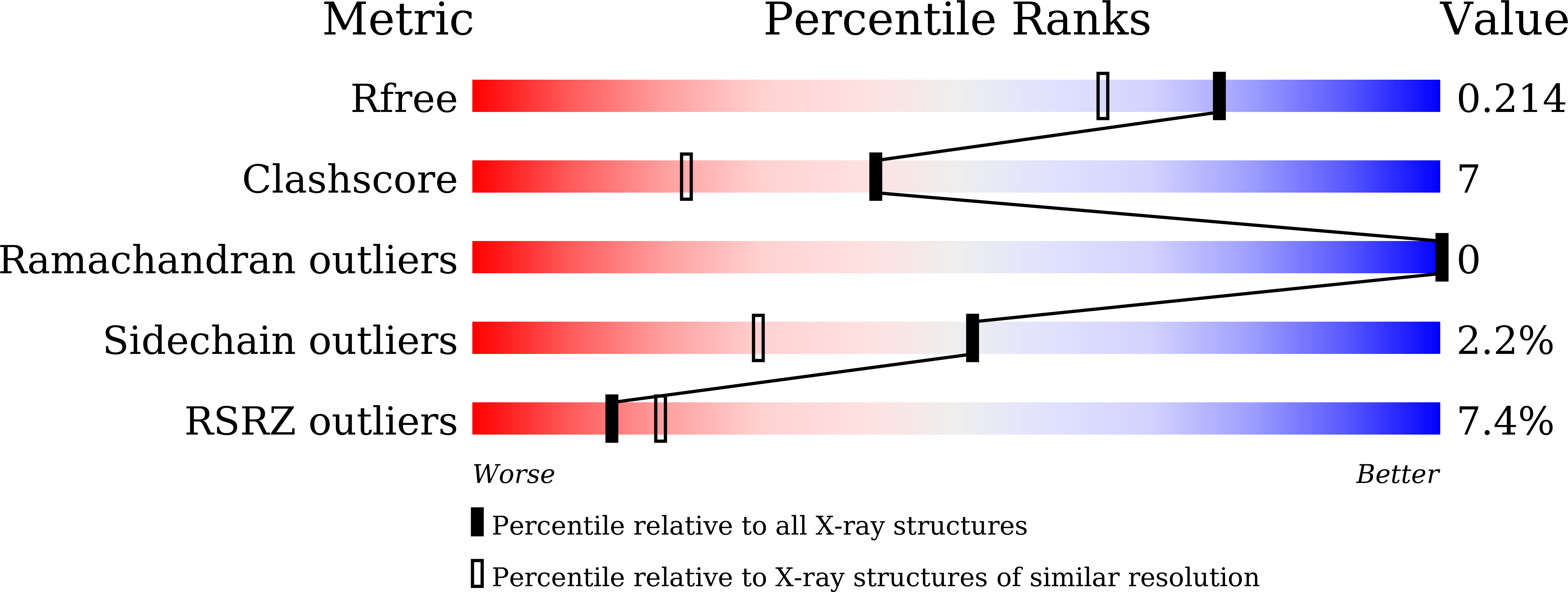Structural mechanism for bacterial oxidation of oceanic trimethylamine into trimethylamine N-oxide
Li, C.Y., Chen, X.L., Zhang, D., Wang, P., Sheng, Q., Peng, M., Xie, B.B., Qin, Q.L., Li, P.Y., Zhang, X.Y., Su, H.N., Song, X.Y., Shi, M., Zhou, B.C., Xun, L.Y., Chen, Y., Zhang, Y.Z.(2017) Mol Microbiol 103: 992-1003
- PubMed: 27997715
- DOI: https://doi.org/10.1111/mmi.13605
- Primary Citation of Related Structures:
5GSN, 5IPY, 5IQ1, 5IQ4 - PubMed Abstract:
Trimethylamine (TMA) and trimethylamine N-oxide (TMAO) are widespread in the ocean and are important nitrogen source for bacteria. TMA monooxygenase (Tmm), a bacterial flavin-containing monooxygenase (FMO), is found widespread in marine bacteria and is responsible for converting TMA to TMAO. However, the molecular mechanism of TMA oxygenation by Tmm has not been explained. Here, we determined the crystal structures of two reaction intermediates of a marine bacterial Tmm (RnTmm) and elucidated the catalytic mechanism of TMA oxidation by RnTmm. The catalytic process of Tmm consists of a reductive half-reaction and an oxidative half-reaction. In the reductive half-reaction, FAD is reduced and a C4a-hydroperoxyflavin intermediate forms. In the oxidative half-reaction, this intermediate attracts TMA through electronic interactions. After TMA binding, NADP + bends and interacts with D317, shutting off the entrance to create a protected micro-environment for catalysis and exposing C4a-hydroperoxyflavin to TMA for oxidation. Sequence analysis suggests that the proposed catalytic mechanism is common for bacterial Tmms. These findings reveal the catalytic process of TMA oxidation by marine bacterial Tmm and first show that NADP + undergoes a conformational change in the oxidative half-reaction of FMOs.
Organizational Affiliation:
State Key Laboratory of Microbial Technology, Marine Biotechnology Research Center, Institute of Marine Science and Technology, Shandong University, Jinan, 250100, China.
















